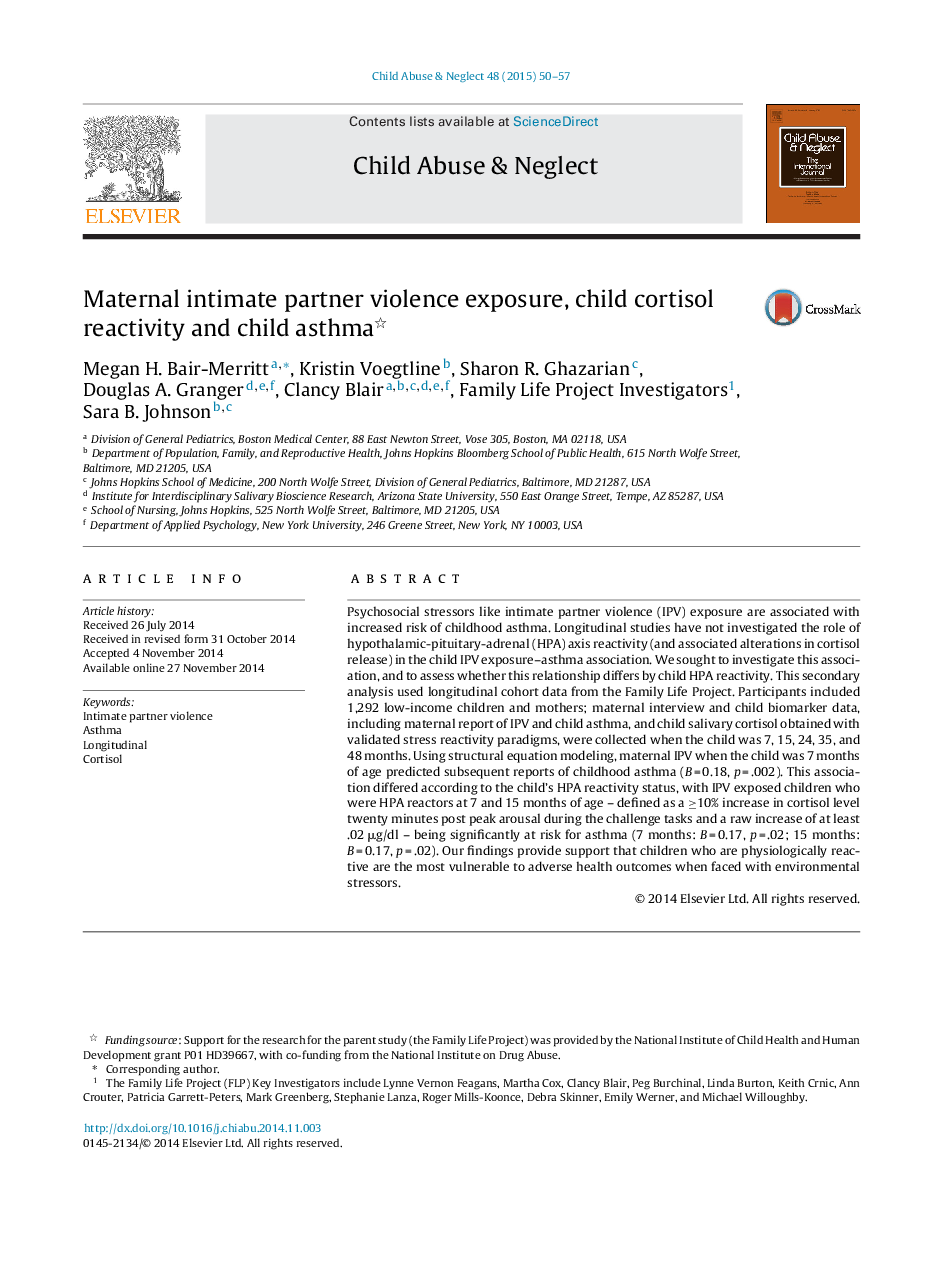| Article ID | Journal | Published Year | Pages | File Type |
|---|---|---|---|---|
| 344578 | Child Abuse & Neglect | 2015 | 8 Pages |
Psychosocial stressors like intimate partner violence (IPV) exposure are associated with increased risk of childhood asthma. Longitudinal studies have not investigated the role of hypothalamic-pituitary-adrenal (HPA) axis reactivity (and associated alterations in cortisol release) in the child IPV exposure–asthma association. We sought to investigate this association, and to assess whether this relationship differs by child HPA reactivity. This secondary analysis used longitudinal cohort data from the Family Life Project. Participants included 1,292 low-income children and mothers; maternal interview and child biomarker data, including maternal report of IPV and child asthma, and child salivary cortisol obtained with validated stress reactivity paradigms, were collected when the child was 7, 15, 24, 35, and 48 months. Using structural equation modeling, maternal IPV when the child was 7 months of age predicted subsequent reports of childhood asthma (B = 0.18, p = .002). This association differed according to the child's HPA reactivity status, with IPV exposed children who were HPA reactors at 7 and 15 months of age – defined as a ≥10% increase in cortisol level twenty minutes post peak arousal during the challenge tasks and a raw increase of at least .02 μg/dl – being significantly at risk for asthma (7 months: B = 0.17, p = .02; 15 months: B = 0.17, p = .02). Our findings provide support that children who are physiologically reactive are the most vulnerable to adverse health outcomes when faced with environmental stressors.
